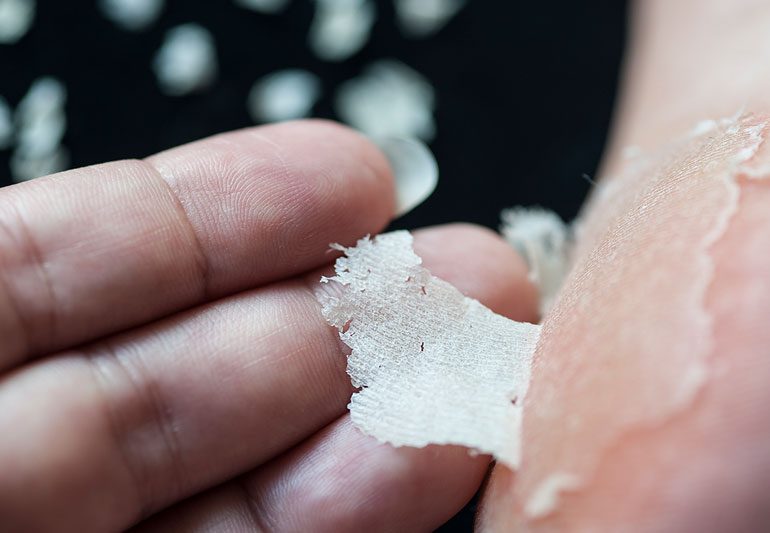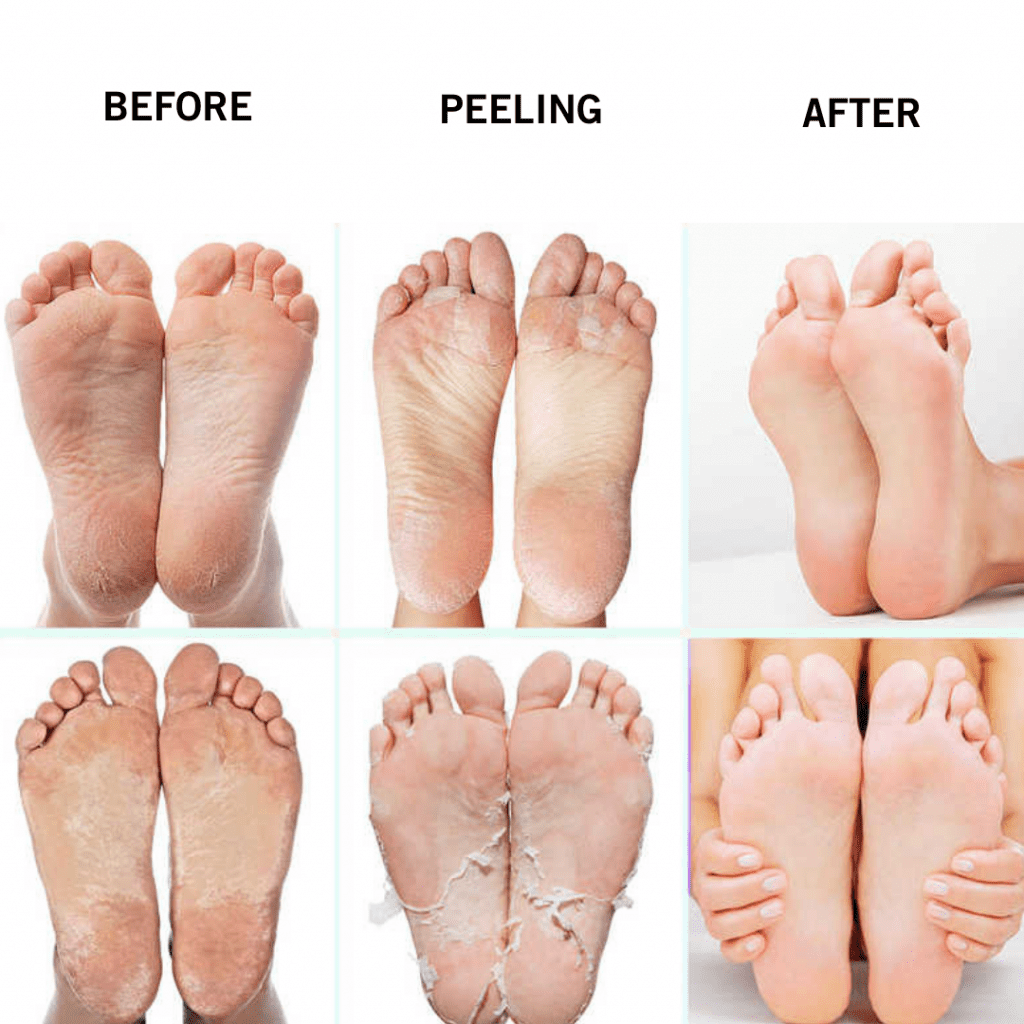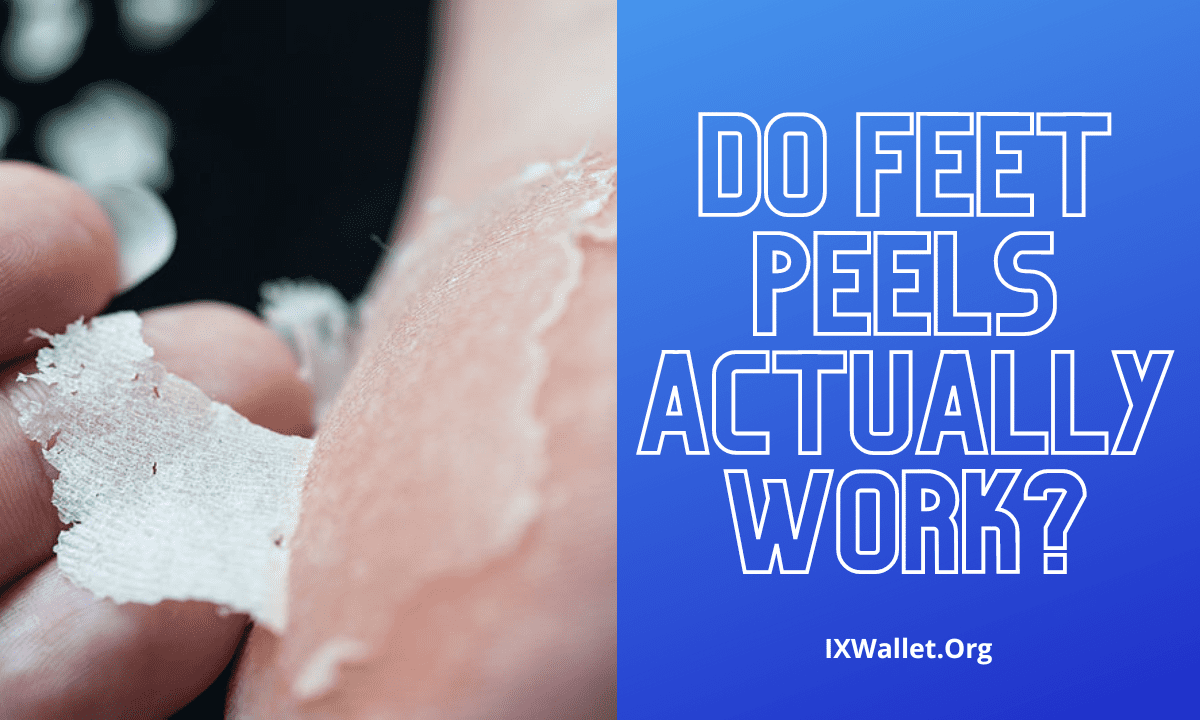Who knows what your bare feet look like these days after a winter spent in sturdy snow boots and cosy house slippers? Find out do foot peels actually work?
As warm weather — and sandal season — approaches, you may be considering shedding your winter skin and preparing for the summer. A foot peel could be the solution.
Shilpi Khetarpal, MD, a dermatologist, explains what foot peels do, what to expect, and how to perform them for optimal results.
What are foot peels?

You are aware that snakes shed their skin and have new skin underneath. True, it’s similar to that.
Peels for the feet are a type of chemical exfoliation, consisting of a single application of a jelly-like mixture of exfoliating chemicals, typically alpha hydroxy acid, glycolic acid, and/or lactic acid. You apply the mixture to the soles of your feet, which stimulates the growth of new, healthy skin. Within a few days, your old, dead skin will slough off to reveal your new skin. No more calluses, please!
“After soaking your feet in a mixture of exfoliating chemicals for five to seven days, the dead skin essentially melts and falls off,” explains Dr. Khetarpal. The skin beneath calluses and rough, dry spots is smoother and softer.
What foot peels can help with
Have you ever wondered why you have calluses on the soles of your feet and palms of your hands but not elsewhere? Your hands and feet have thicker skin than the rest of your body because they are continuously in use.
Dr. Khetarpal explains, “On our feet, the pressure of standing and the friction of wearing shoes and socks can cause calluses and a thickening of the skin.” This makes it harder for ordinary creams and lotions to enter and nourish the affected area.
The skin on your feet sheds less regularly than the skin on the rest of your body. Enter foot peels, which are used for:
- Calluses.
- Dry skin.
- Rough patches.
- Thickened skin, like on your heels.
What to expect after a foot peel

One of the most crucial things to remember about foot peels is that they do not take effect immediately. After your first foot peel, you won’t notice much of a difference.
“Once the peel has been applied, your feet will first feel normal,” Dr. Khetarpal explains. It takes a few days for the skin to begin shedding, and then it peels and peels until the skin underneath is once again soft and smooth.
The process is as follows:
- Apply the foot peel. You will find instructions on the foot peel package. Your feet should soak for 15-30 minutes.
- Have patience. The foot peel will exfoliate your skin. You will see results in five to seven days.
- Let the peeling begin. Once your feet begin to shed, let them to do their job. “Don’t try to speed up the process by using a pumice stone or anything else,” Dr. Khetarpal advises, “and you shouldn’t scrub or physically peel.””
- Lotions are OK. During the procedure, you can pamper your feet by adding fragrance-free lotion or oils to keep them hydrated.
- Keep your feet covered. Wear socks from start to finish to contain dead skin. “Protect your feet till all the shedding is complete,” recommends Dr. Khetarpal.
The shedding process can take one to two weeks, depending on how much dead skin is on your body.
Are foot peels safe?
Yes, foot peels are harmless so long as you are only attempting to eliminate basic roughness and dryness. However, if you are prone to skin problems, a foot peel may exacerbate them.
Dr. Khetarpal adds that a foot peel will have no effect on these problems, and may even make them worse by adding chemicals and aggravating the skin. You should not perform a foot peel if you currently have or have a history of:
- Eczema.
- Psoriasis.
- Contact dermatitis (allergic reactions)
- Athlete’s foot.
- Fungal infection.
- Itching.
- Rash.
- Redness.
- Sores or wounds.
You should avoid the peel in these cases and ask your doctor for guidance instead.
When to do a foot peel
A foot peel is not a typical part of your beauty regimen. It is a one-and-done activity, at least for the time being.
“A peel should not be performed more frequently than every six to eight weeks,” adds Dr. Khetarpal. I would be shocked if people needed to remove their dead skin more frequently than once every three or four months.
And it is ideal to perform a foot peel during the winter, when your feet are not exposed. You do not want to peel in sandals with straps or while barefoot on the beach.
Other ways to soften your feet
These quick fixes can soften your feet’s soles if you don’t have time to do a peel – especially during the summer months.
- Try gentle drugstore tools. You can manually smooth the skin of your feet in the shower with a pumice stone or callus remover.
- Stay moisturized. Heels that have become hard may benefit from an exfoliating moisturizer such as urea cream or AmLactin® lotion.
- Treat overnight. Apply petroleum jelly to your feet before bed, and wear cotton socks for a few nights in a row. It is important to hydrate the skin in that area, says Dr. Khetarpal.
Conclusion: Do I need One?
Need is a forceful term. My feet were softer after the foot peel mask. Sort of. The soles of my feet were as smooth as a baby’s bottom, but the persistent callus had just been softened as after a pedicure. For me, the journey was more important than the destination. I enjoyed the nightly practise of soaking my feet in warm Epsom-salted water, and yes, I peeled with enthusiasm every night; I have no regrets. My feet were uninjured, and shedding skin was therapeutic in some way.
Related Post:

